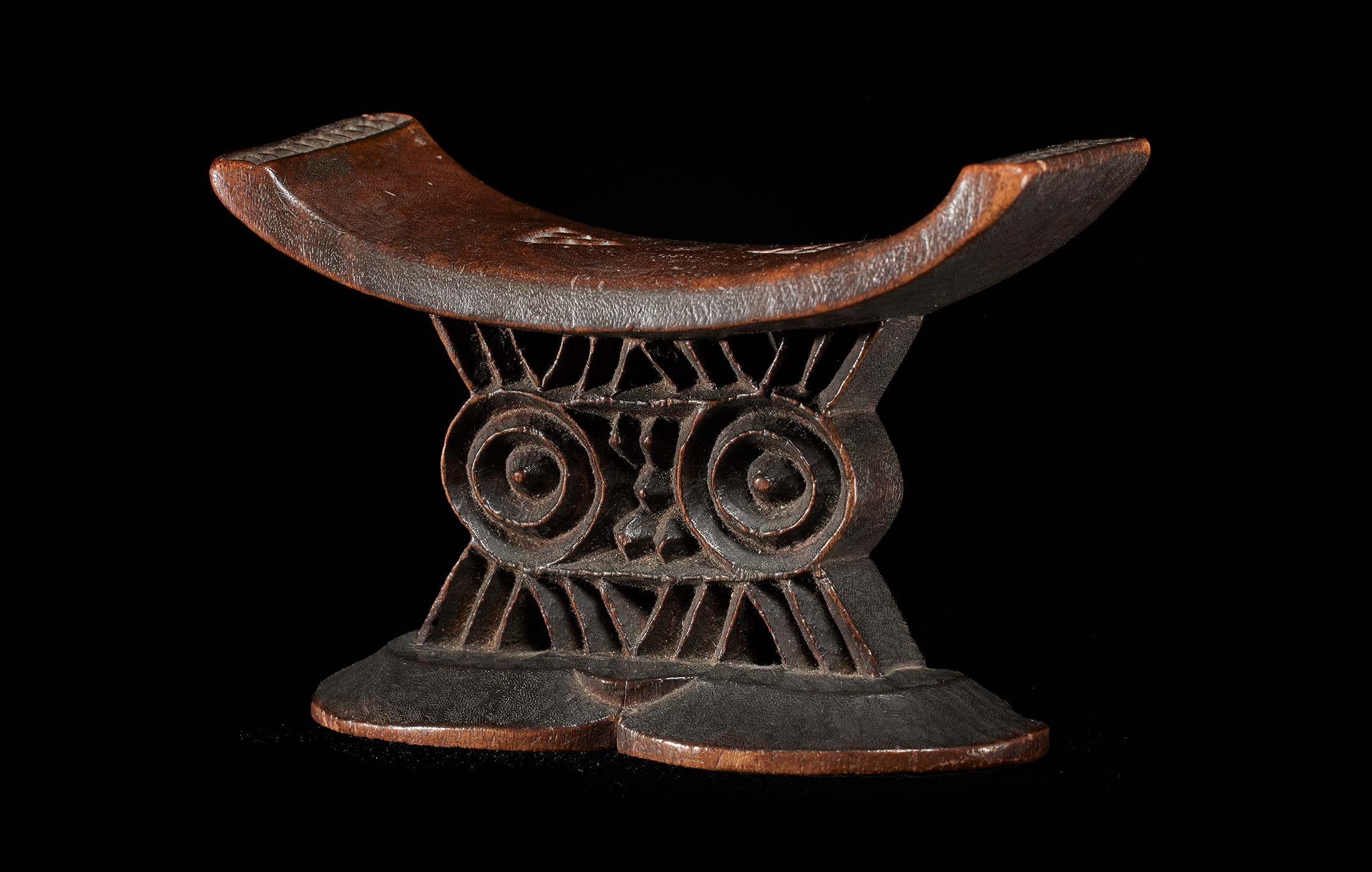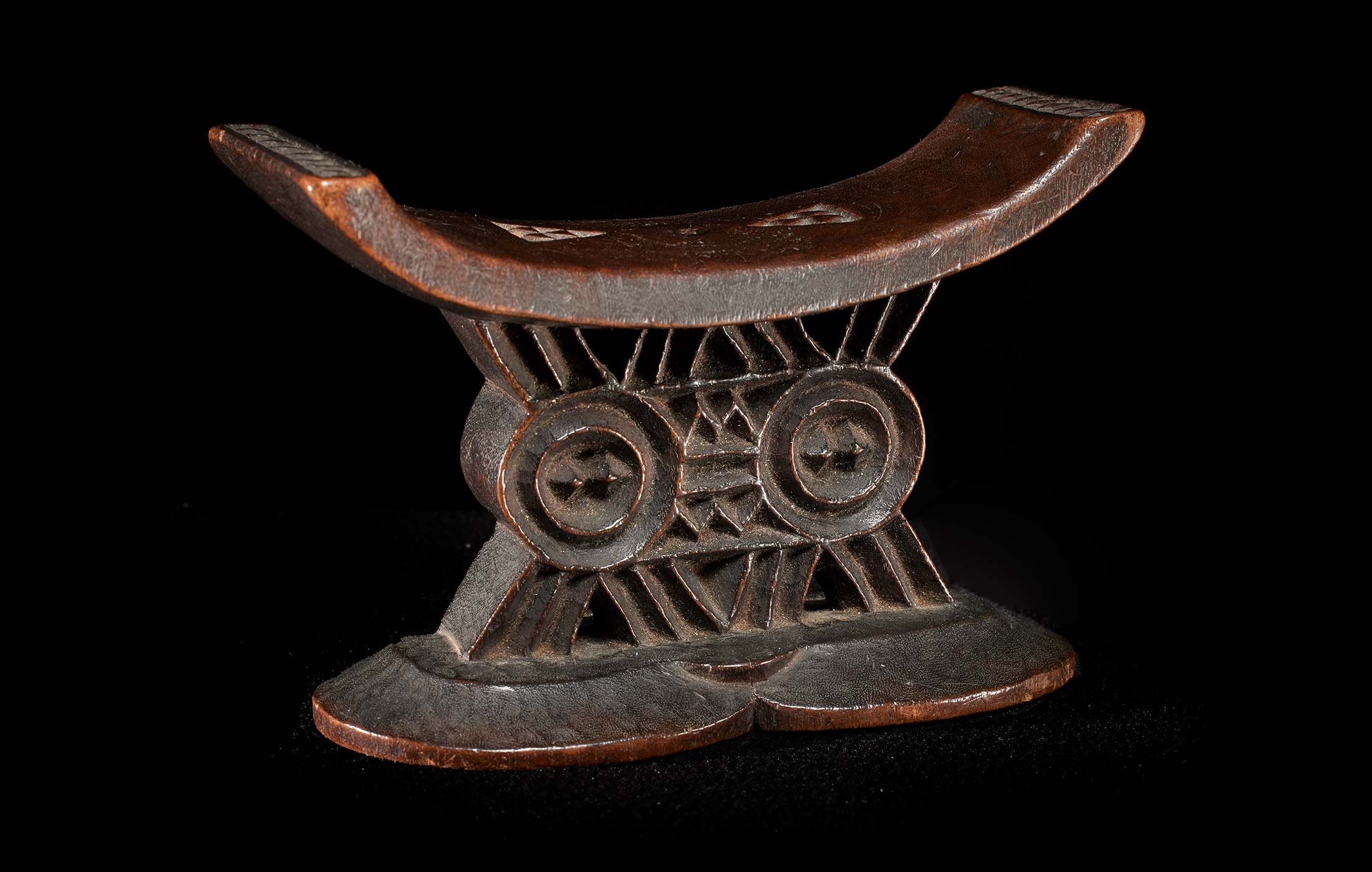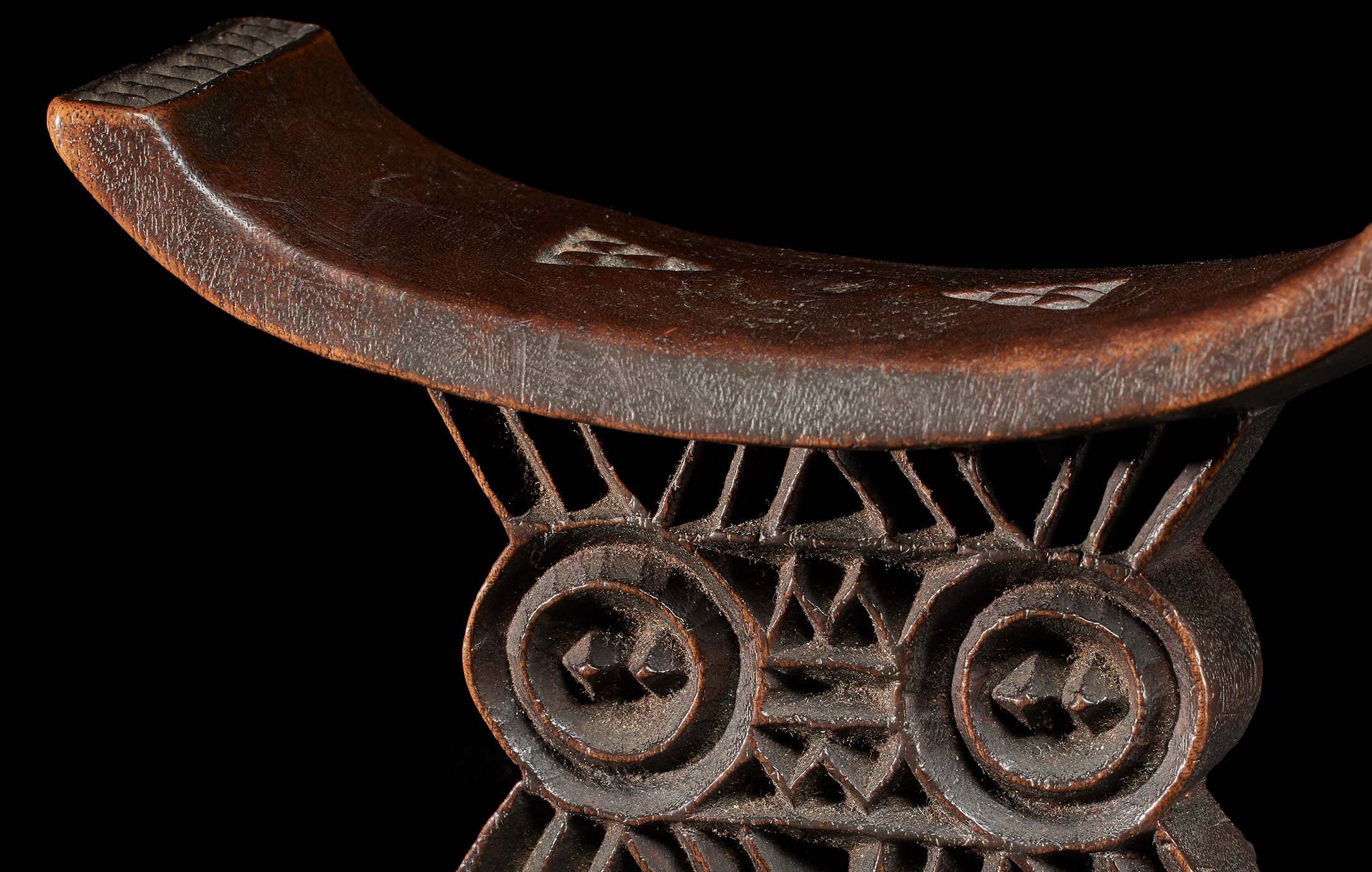Head Rest
Shona peoples, Zimbabwe
Early 20th c.
Provenance: Joel Cooner, Dallas. Drs. Noble and Jean Endicott, NY, acquired from above in 1994.
Shona sculptors have imbued the tradition of carved wooden headrests in southern Africa with distinct artistic interpretation. This well-worn and deeply patinated headrest exemplifies the style favored by Shona sculptors in eastern Zimbabwe, which extends into Mozambique. Eastern-style headrests typically feature a rectangular upper platform adorned with decorative elements like carved lozenges, parallel or zigzag lines, and triangular patterns. The base of these headrests is often figure-eight-shaped and gently tapers toward the central support.
The central support is composed of V-shaped motifs, both upward and downward, interspersed with circular motifs. These motifs are intricately decorated with parallel lines, zigzags, and concentric circles. The concentric circles may symbolize conus shell disks (ndoro), historically associated with prestige, leadership, and spirit mediums in the region. However, the exact meaning of these motifs remains a subject of scholarly debate.
Some interpretations suggest that the headrests may symbolize female cicatrization marks, with “nyora” referring to both phenomena. It’s noteworthy that these nyora patterns consistently appear on Shona headrests across regions, possibly signifying the transition to womanhood and marriage eligibility. Mature men primarily used these headrests, making them symbolic of the importance of women and wives in Shona society. These headrests serve as multifaceted symbols, reflecting various aspects of Shona life and culture.
Length: 6 ¾ in / 17.1 cm
Head Rest
Shona peoples, Zimbabwe
Early 20th c.
Provenance: Joel Cooner, Dallas. Drs. Noble and Jean Endicott, NY, acquired from above in 1994.
Shona sculptors have imbued the tradition of carved wooden headrests in southern Africa with distinct artistic interpretation. This well-worn and deeply patinated headrest exemplifies the style favored by Shona sculptors in eastern Zimbabwe, which extends into Mozambique. Eastern-style headrests typically feature a rectangular upper platform adorned with decorative elements like carved lozenges, parallel or zigzag lines, and triangular patterns. The base of these headrests is often figure-eight-shaped and gently tapers toward the central support.
The central support is composed of V-shaped motifs, both upward and downward, interspersed with circular motifs. These motifs are intricately decorated with parallel lines, zigzags, and concentric circles. The concentric circles may symbolize conus shell disks (ndoro), historically associated with prestige, leadership, and spirit mediums in the region. However, the exact meaning of these motifs remains a subject of scholarly debate.
Some interpretations suggest that the headrests may symbolize female cicatrization marks, with “nyora” referring to both phenomena. It’s noteworthy that these nyora patterns consistently appear on Shona headrests across regions, possibly signifying the transition to womanhood and marriage eligibility. Mature men primarily used these headrests, making them symbolic of the importance of women and wives in Shona society. These headrests serve as multifaceted symbols, reflecting various aspects of Shona life and culture.
Length: 6 ¾ in / 17.1 cm






